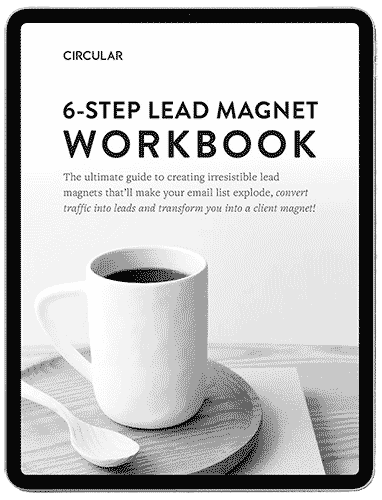Trauma Therapy Murray UT
Have you ever felt like you’re stuck replaying a moment from your past over and over? Like a part of you is still there, even though the rest of you has tried so hard to move on. It’s a feeling I’ve heard from so many people I’ve worked with here in Murray. They’re successful, they have families, they’re doing all the things they’re “supposed” to be doing, but there’s this invisible weight they carry.
This article is for you if you’re tired of carrying that weight. We’re going to talk about what trauma therapy really is, spoiler alert, it’s not what you see in the movies. We’ll look at how to find the right kind of help for you, and we’ll even explore some of the ways our bodies try to protect us when we’ve been through something overwhelming. I remember talking to a man who felt like he was watching his own life from a distance. He loved his family, but he felt disconnected, like he was just going through the motions. That feeling of being disconnected is a common thread in trauma, but it doesn’t have to be your forever. There is a path back to yourself, and it’s a gentler journey than you might think.

What Exactly Is Trauma Therapy? (And Why It’s Not What You Think)
When people hear the word ‘trauma’, they often think of big, dramatic events. And while those things certainly count, trauma can also be the result of experiences that are less obvious. It’s any experience that overwhelms your ability to cope. Trauma therapy is a way to help you process these experiences in a safe and supportive environment. It’s not about forcing you to talk about things you’re not ready to talk about. It’s about gently working with your mind and body to release the stored-up stress of those past events. The National Institute of Health says that Psychotherapy can be a very effective tool for this (1). It’s about helping you feel safe in your own skin again, and that’s a pretty powerful thing.
The Best Type of Therapy for Your Trauma: Finding What Fits
There are a lot of different ways to do therapy, and there’s no single ‘best’ one for trauma. What works for one person might not be the right fit for another. Some people find that traditional talk therapy is really helpful. Others might benefit from something more body-focused, like somatic experiencing, which helps you tune into what your body is holding onto. Then there’s EMDR (Eye Movement Desensitization and Reprocessing), which can help your brain reprocess traumatic memories so they don’t feel so immediate and overwhelming. As you can see on a site like Psychology Today, there are many options (2). The most important thing is finding a therapist you trust and a method that feels right for you. It’s a partnership, and you should feel like you’re in the driver’s seat.

Understanding Your Body’s Response to Trauma: The 7 ‘F’s
Have you ever wondered why you react the way you do in certain situations? It’s often your body’s trauma response kicking in. We’ve all heard of ‘fight or flight’, but there are actually several more. They’re sometimes called the 7 ‘F’s: Fight, Flight, Freeze, Fawn (pleasing others to avoid conflict), Flop (collapsing), Faint, and Friend (reaching out to others for help). These aren’t choices we make, they’re automatic survival instincts. Understanding this can be a huge relief. It’s not that there’s something ‘wrong’ with you, it’s that your body is trying to protect you. There’s a lot of great research on how trauma affects the body, and you can read more about it in scientific journals like PNAS (3). Recognizing your own patterns is a big step toward being able to manage them.
Your Path to Healing from Trauma in Murray UT
So, where do you start? The first step is often the hardest, but it can also be the most rewarding. It starts with a little bit of self-compassion. Healing from trauma is a journey, not a race. It’s about taking small, gentle steps. Sometimes that might mean just taking a few deep breaths when you feel overwhelmed. Or maybe it’s taking a walk through a quiet place like Murray Park and just noticing the world around you. Finding a therapist you connect with is a key part of this. They can provide a safe space for you to explore these things at your own pace. If you’re looking for simple grounding techniques, a great resource is the Mayo Clinic (4). Remember, you don’t have to do this alone.
Ready to Take the Next Step?
If anything in this article resonated with you, I encourage you to reach out. You don’t have to have all the answers. You just have to be willing to take the first step. If you’re ready to start your journey toward healing, we’re here to help.
Frequently Asked Questions
What does trauma therapy involve?
Trauma therapy is a personalized. You work with a therapist to understand and heal from the effects of overwhelming experiences from your past. Therapy is done at your pace in a safe and confidential setting. The focus is to help you feel more control over your life.
How do I know which therapy works for me and my trauma?
The best way to find out is to start talking to a therapist. An initial consultation will enable them to explain different approaches they use and help you decide what might be the best fit. The most important goal is your comfort and being understood.
What are common ways people react to trauma?
People react to trauma in many ways that differ based on many factors. Some reactions include anxiety, feeling on edge, or sleep dificulties. Additional feelings of disconnection and memory avoidance is also common and normal reactions to high stress experiences.
How do you begin to heal from traumatic experiences?
First you need to acknowledge that you’ve been through something difficult, and that it’s okay to need help. Reaching out for assistance and help to a therapist is challenging, but it’s a brave and powerful step to begin healing.

